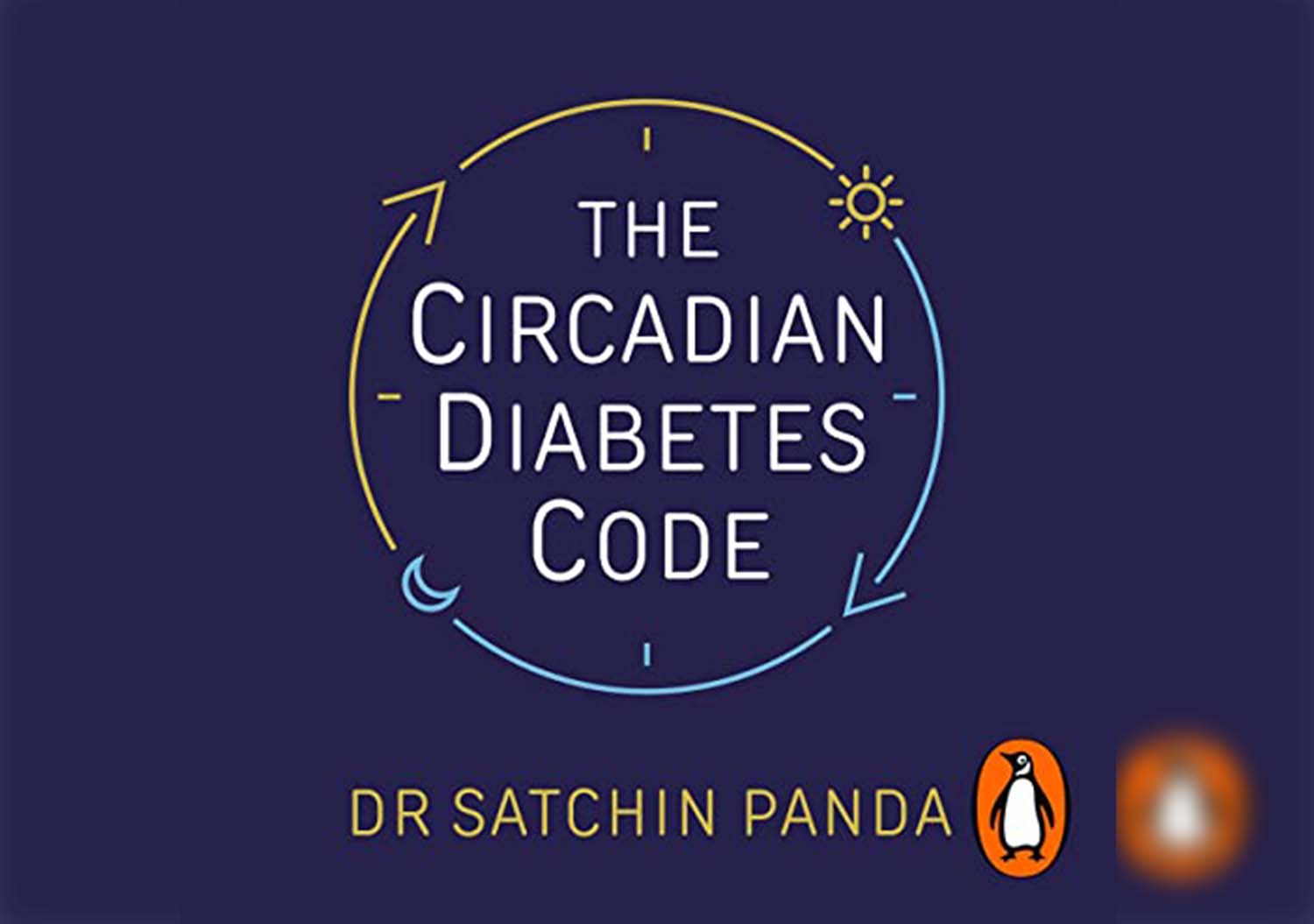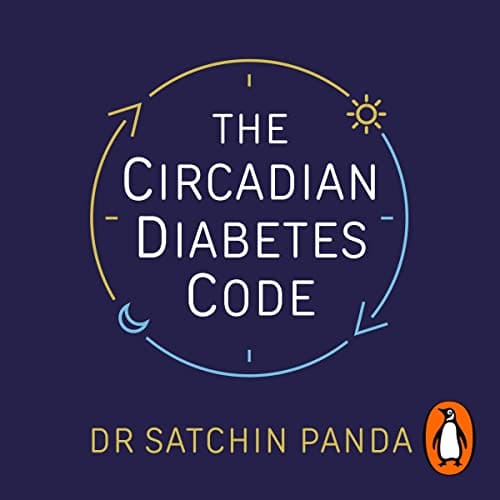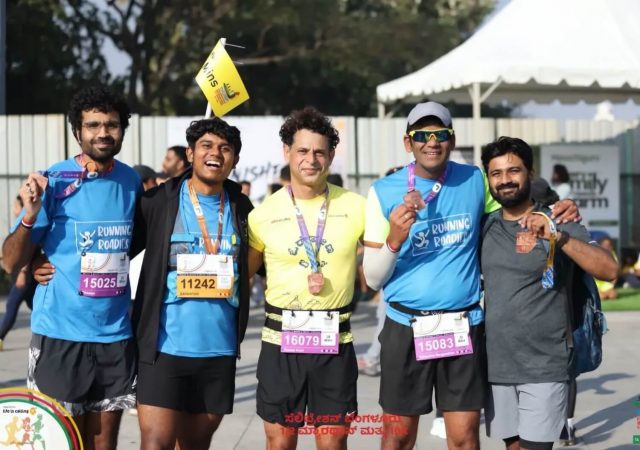The Circadian Diabetes Code on Audible, offers powerful insights from Dr. Satchin Panda, who explains how aligning with the body’s natural rhythms can transform health outcomes
Reversing type-2 diabetes and pre-diabetes is within reach through intentional, science-backed lifestyle changes. With World Diabetes Day approaching, there’s no better time to explore practical steps that can lead to a healthier, more fulfilling life. Here, we share five actionable tips from The Circadian Diabetes Code audiobook that you can start implementing today. For a comprehensive guide on adopting these changes, tune into the audiobook on Audible and take a meaningful step toward reclaiming your health.
1. Incorporate Intermittent Fasting (IF)
• Intermittent fasting is highly effective for those with diabetes, as it improves insulin sensitivity and encourages fat burning during prolonged fasting hours. Try beginning with a 12-hour fast overnight (e.g., from 8:00 p.m. to 8:00 a.m.) and work toward extending this to 14 or even 16 hours gradually.
• According to the audiobook, “Intermittent fasting improves the coordination between organs and optimises their functions. This is an important finding because it means that when your eating routine is in alignment with your organs’ clocks, the genes that are supposed to turn on and rise together in the morning do so effortlessly…This means that as glucose enters the cells, the glucose molecules are used in the right ways. As a result, blood glucose levels do not rise too high after a meal.”
• By practising IF, your body relies on stored energy rather than constantly processing new calories, allowing blood sugar levels to remain more stable.
2. Adopt a 10-Hour Eating Window
• Limiting your meals to a 10-hour window can support blood sugar stabilisation and weight loss. Start by choosing a time window, like 8:00 am to 6:00 pm, and gradually reduce your eating hours if you’re currently eating over a longer span.
• Dr. Satchin Panda says, “While the results of maintaining a 12-hour eating window are impressive, further reducing your eating time is significantly advantageous…when it comes to weight loss, we’ve found the best results occur when eating within an 8- or 9-hour window, even though many will see good results starting with a 12-hour window… We’ve found it’s best to start by establishing a 12-hour eating window for the first two weeks and then gradually reduce that to a 10-hour maintenance programme.”
• Aim to consume all your calories within this timeframe and avoid snacks outside the set window. This approach helps your body process food more efficiently, syncing your metabolism with your natural circadian rhythm.
3. Exercise in the Morning for Blood Sugar Benefits
• Start your day with 20–30 minutes of aerobic activity like brisk walking or light jogging in daylight. Morning exercise not only activates your metabolism but also helps burn stored fat and supports insulin function.
• Dr. Satchin Panda in the audiobook notes, “It doesn’t matter whether you wait until sunrise to begin your morning activity. You can start anywhere from 30 minutes to 2 hours before or after sunrise. If you exercise in a gym or at home in the morning, find a spot that is next to a large glass window or under bright light. As long as you are dressed properly for the weather, you can take a morning walk throughout most of the year, unless there is a weather warning. In fact, exercising in cold air imparts some additional health benefits. Cold air activates the brown fat or converts the white fat to beige fat.”
• For those new to exercise, start with a short walk and increase the duration and intensity over time.
4. Prioritise Sleep and Limit Blue Light Exposure
• Quality sleep is essential for blood sugar management, as poor sleep can heighten cravings and impact insulin sensitivity. To improve your sleep quality, dim lights and reduce screen time two hours before bed, as blue light exposure from screens can disrupt melatonin production.
• The audiobook advises that a reduction in evening light exposure can help regulate sleep cycles, “If you have difficulty falling asleep, try wearing glasses that filter blue light for an hour or two before bedtime. Blocking that blue light can trigger earlier release of the sleep hormone melatonin. With better sleep, you can better control your blood glucose. If you need to wear prescription glasses, look for blue light glasses that are oversized so that they can go over your prescription glasses.”
• You may even try establishing a calming bedtime routine with activities like reading or meditation to promote better rest.
5. End Evening Meals and Snacks a Few Hours Before Bedtime
• Giving yourself at least 2–3 hours between your last meal and bedtime allows your body to start the digestive process before sleep. This practice supports better blood sugar levels by reducing the likelihood of overnight glucose spikes.
• As the audiobook recommends, “After breakfast, dinner is the second most important meal to align with your circadian rhythm, as it signals the end of your eating for the day. If breakfast begins at 8:00 a.m., dinner must end by 8:00 p.m. Once your body recognises that no more food is coming, it will slowly transition to its repair and rejuvenation mode.” If you’re used to a late-night snack, try substituting it with herbal tea to ease into this habit gradually.
• Dr. Satchin elaborates, “After dinner, make sure you do not lie down or go to sleep right away. I give myself 3 to 4 hours between my last bite and going to bed, which ensures better digestion and better sleep. It’s perfectly normal to experience these hunger pangs. Try hard to push past this by drinking a glass of water; as your body adjusts to this new rhythm, the late-night hunger will go away..”
The views shared here are those of Dr. Satchin Panda, as presented in The Circadian Diabetes Code, and not those of Audible.











